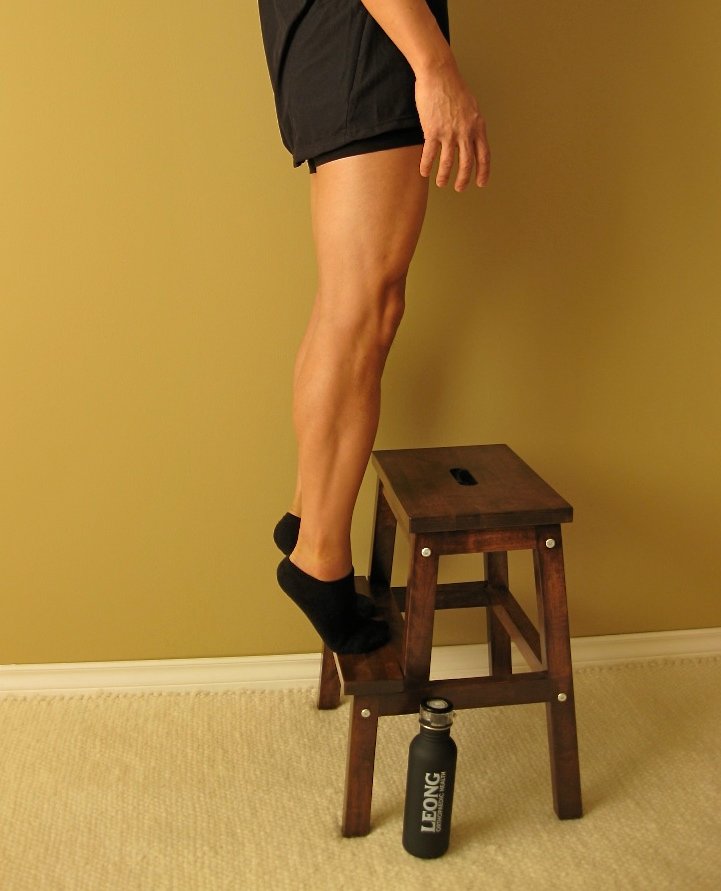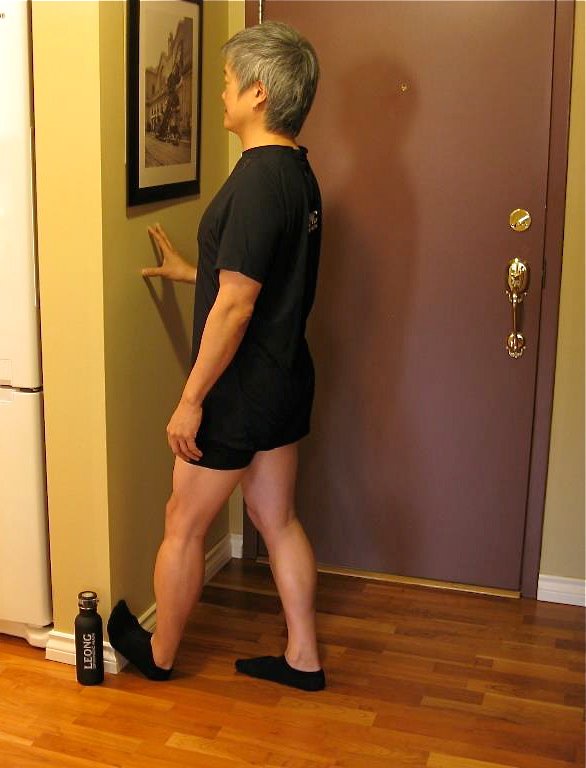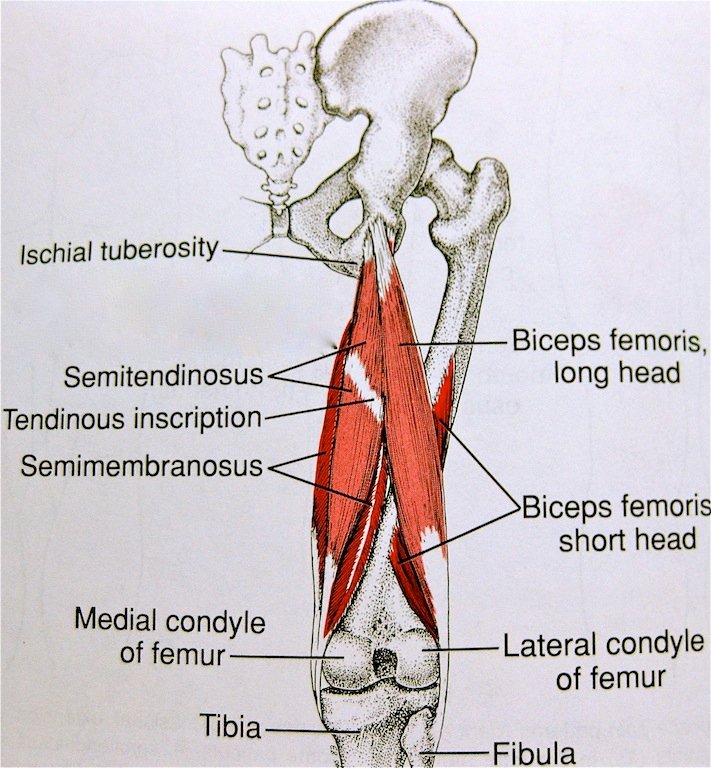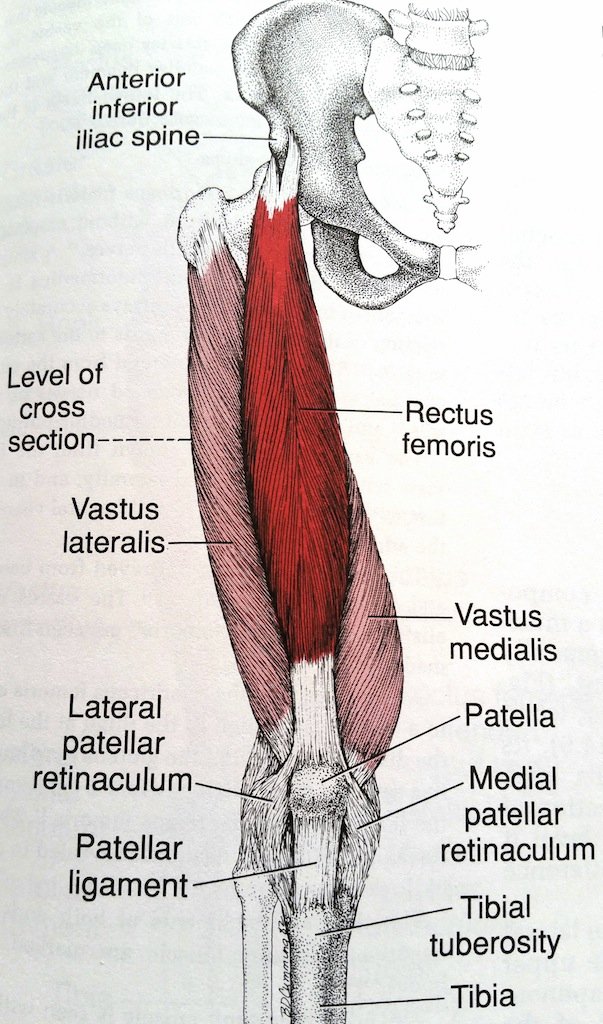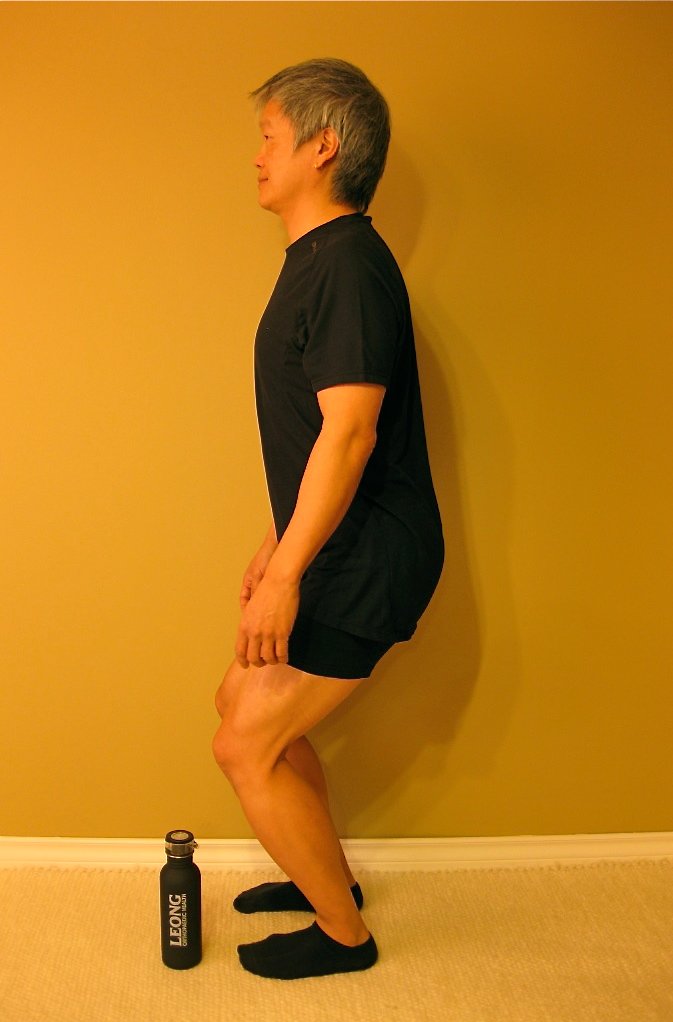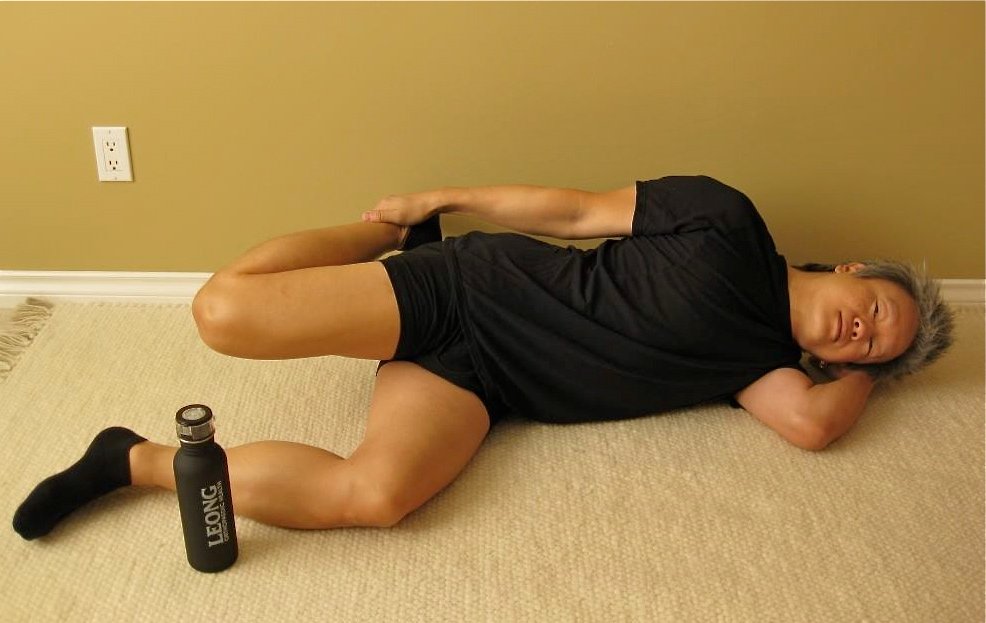According to the Centres for Disease Control and Prevention, nearly 50% of people develop knee pain from symptomatic osteoarthritis by age 85.
Are you experiencing knee pain?
You’re in luck. If you catch knee issues early, the fix is easy. Strengthening the surrounding musculature stabilizes your knee.
Regardless of what’s going on inside your knee joint. Regardless of whether or not you’re waiting for surgery. If you can do any or all of the following strengthening and stretching exercises pain-free, then do so.
The Gastrocnemius Muscle
The Gastrocnemius (calf muscle) is a strong muscle crossing the knee joint that offers incredible stability.
This muscle can almost always be strengthened pain free because the knee stays straight and no stress is placed on the joint. Many times, just this single strengthening exercise has chased away a client’s knee pain.
Gastrocnemius Strengthening
- Exercise is best done on a bottom stair.
- Keep your abdominal muscles tight.
- Draw your shoulder blades together slightly.
- Place the balls of both feet on the stair with the rest of your foot hanging over the edge.
- Keep your knees straight.
- To protect your Achilles Tendon, strengthening in full range of motion is a must. Lower your heels as far as possible and raise your heels as far as possible.
- Work your way up to 30 repetitions.
- Once you can do 30 repetitions, switch to strengthening one calf at a time.
Calf (Gastrocnemius/Soleus) Stretch
After strengthening a muscle, stretch it immediately.
- Heel on ground, toes up on wall.
- Keep knees straight.
- Keep eyes level (any movement of the inner ear will cause a slight contraction of the calf muscle as it is part of the postural muscle group).
- You should feel this stretch on your calf.
- Hold for one minute by the clock (each side).
Hamstring Muscles
The hamstrings consist of three muscles that run down the back of the leg and cross the knee joint. Strengthening the hamstrings helps to stabilize the knee joint.
Hamstring Strengthening
- Lie on your back with your feet up on a stool or chair.
- Hips and knees MUST stay at 90 degrees.
- Arms by your sides with hands in fists to protect your finger joints.
- Hold your abdominal muscles tight.
- Lift your butt and lower back off the ground.
- Ease yourself back down slowly.
- Almost touch the ground, but don’t. No resting. Raise yourself back up.
- Work your way up to 25 repetitions.
- When you can do 25 repetitions, do this exercise one leg at a time. So with one leg on the stool and the other straight up in the air.
Warning: if you feel any pain in your knee, stop this exercise immediately.
Hamstring Stretch
After strengthening a muscle, stretch it immediately.
- Straighten one leg.
- Reach toward your ankle, allowing your hand to rest comfortably on your leg.
- Keep your lower back straight.
- It’s easy to gain more movement from rounding out your lower back. Never do this! This alone can cause lower back pain. Instead, bend forward from your hip.
- Keep your knee soft (do not press the back of your knee down into the carpet).
- You should feel this stretch on the back of your thigh.
- Hold for one minute (by the clock) on each side.
Warning: keep your lower back straight and untwisted at all times and ensure your weight is placed equally on both sides of your butt.
Modification: If you can’t keep your back straight, place firm pillow under your butt.
Hamstring Stretch (alternative)
If you have difficulty keeping your back straight, this another alternative:
- Lie on your back.
- Place your butt near a corner.
- Stretch one leg up the wall (knee straight, but soft), and
- your other leg on the floor (knee straight, but soft).
- Hold for one minute (by the clock) on each side.
This allows you to gain that stretch on your hamstring, but not round out your lower back. This alternative is a must for folks who have a naturally flat lower back.
Muscle Imbalance
The quadriceps consist of four muscles that cross and stabilize the knee joint.
Many strengthen only their quadriceps, missing out their hamstrings and calves. The Quadriceps get strong while the hamstrings and calves do not. This muscle imbalance can wear the cartilage and eventually cause knee pain.
It’s important to strengthen all three muscle groups. The Gastrocnemius, Hamstrings and Quadriceps work best together as a team to stabilize the knee.
Quadriceps Strengthening
- Hold your core tight.
- Draw your shoulder blades together slightly.
- Stand with your feet pointing forward and shoulder width apart.
- In a quick movement, drop your knees into a quarter squat.
- Work your way up to 30 repetitions.
- Once you can do 30 repetitions, switch to strengthening one leg at a time while holding onto the wall for support.
Warning: ensure that your knees stay behind your toes. Otherwise, too much stress is put on the knee joints.
Quadriceps Stretch
After strengthening a muscle, stretch it immediately.
- Snug your shoulder up against the wall to increase stability.
- Grasp your ankle or foot and pull it up directly behind your butt. Do not twist or torque knee.
- Ensure your knee is pointing directly at the floor.
- Make sure you do not feel this in your lower back.
- You should feel this stretch on the front of your thigh.
- Hold for one minute by the clock.
Quadriceps Stretch (alternative)
- Lay on your side with a neutral spine.
- Cradle your head on a bent arm for a neutral spine.
- Bring your bottom leg up in front at a 90 degree angle to ensure stability.
- Grasp your ankle or foot and pull it up directly behind your butt, keeping your leg parallel with the ground
- Your eventual goal is for your upper leg and body to be in a straight line.
- You should feel this stretch on the front of your thigh.
- Hold for one minute by the clock.
Best of luck with your knees!
No body is the same as another. Bone structure differs, requiring muscles, tendons, and ligaments to be different lengths and attach at varying angles. To gain the most success, pay close attention to how each exercise feels.
– LEONG Orthopaedic Health
personal training
by appointment only. Please email:
LeongOrthopaedicHealth@gmail.com
If you like this article, please share it!
All rights reserved; no part of this publication may be reproduced or transmitted by any means, electronic, mechanical, photocopying or otherwise, without prior permission. Copyright 2015



